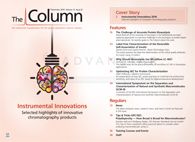ChromSoc Grass Roots Event Lauded as a Success
Following their successful “Grass Roots” educational event held in the Lake District, The Chromatography Society (ChromSoc) has announced plans for further events in the same format for 2017.
Photo Credit: Paul Ferguson

Following their successful “Grass Roots” educational event held in the Lake District, The Chromatography Society (ChromSoc) has announced plans for further events in the same format for 2017.
The event was hailed as a “tremendous success” by ChromSoc President Paul Ferguson, who attended the course as one of a number of expert chromatographers.
“The Society’s committee were keen to organize something slightly different from the usual diet of one- or twoâday symposia and to this end decided to hold a training event,” explains Ferguson. “Historically, this is an area the Society were highly active in; organizing high performance liquid chromatography (HPLC) and chiral HPLC courses in the 1980s and early 1990s.”
The four-day course was aimed at post-graduate students and novice chromatographers and focused on the fundamental aspects of HPLC theory and practice. This ranged from the importance of physico-chemical parameters, mobile phase and column selection, to sample preparation and gradient chromatography, which sat well alongside practical opportunities to look inside LC instrumentation and critique chromatographic methods.
“I had the most amazing time away and have been completely overwhelmed by the information thrown at me whilst being in a place that was truly magical. All of the enthusiasm is infectious and completely made it for me! There’s nothing better than listening to people who truly know and love their subject. I came away with so much from the course,” said Natasha Beasley, one of the course attendees.
For all upcoming events and further information please visit: www.chromsoc.com

Distinguishing Alcohol- from Non-Alcohol-Associated Liver Cirrhosis with LC-MS
May 7th 2025A pilot study investigating whether nicotinamide adenine dinucleotide kinase (NADK) expression is selectively diminished in alcohol-associated liver cirrhosis (AC), as well as evaluating its potential as a biomarker for this condition, measured AC and non-AC (NAC). Nicotinamide adenine dinucleotide (NAD+) and nicotinamide adenine dinucleotide phosphate (NADP+) levels in human liver samples were measured using liquid chromatography-mass spectrometry (LC-MS).

.png&w=3840&q=75)

.png&w=3840&q=75)



.png&w=3840&q=75)



.png&w=3840&q=75)












